Castanea sativa (Sweet Chestnut, Spanish Chestnut)
Botanical Information
| Family | Fagaceae |
| Genus | Castanea |
| Species | sativa |
| Synonyms | Castanea vesca, Castanea vulgaris |
| Category | Woody |
| Type | Tree (deciduous) |
| Origin | Southern Europe, North Africa to southwest Asia. |
| Ethnobotanical Uses Disclaimer | The fruit is an edible nut common in European and North American stores at Christmas. |
| Pronunciation |
Details
| USDA Hardiness Zone | 5 - 7 |
| USDA Hardiness Ref. | |
| Canadian Hardiness Zone | 4a - 6b |
| Canada Hardiness Ref. | |
| RHS Hardiness Zone | H6 - H7 |
| RHS Hardiness Ref. | |
| Temperature (°C) | -29 - 15 |
| Temperature (°F) | -20 - 20 |
| Height | 30 m |
| Spread | 15 m |
| Growth | Fast |
| Flowering Period | July |
Description and Growing Information
| Shape | Upright, branches and spreading. |
| Propagation | Seed and grafting. |
| Cultivation | Prefers full sun. Plant in well-drained soil. Prefers loam and sand. |
| Pests | Most of the largest specimens have been eradicated in North America by Chestnut blight (Cryphonectria parasitica) leaving small trees sprouting from old stumps: the disease is now found in Europe and England. |
| Notable Specimens | Port Dover Cemetery, Port Dover, Ontario, Canada. Westonbirt, The National Arboretum, Tetbury, Gloucestershire, England. Lanhydrock Gardens, Cornwall, England. |
| Bark/Stem Description | The bark is grooved. |
| Leaf Description | Serrate, oblong-lanceolate leaves that are 20 cm long. |
| Flower Description | Conspicuous catkins. The male catkins are 15 cm long. |
| Fruit Description | Spiny fruit that contains nuts. |
| Colour Description | The leaves are green, catkins yellow while the bark is brown. |
| Texture Description | The bark is rugged. The leaves are glossy. |
Photographs
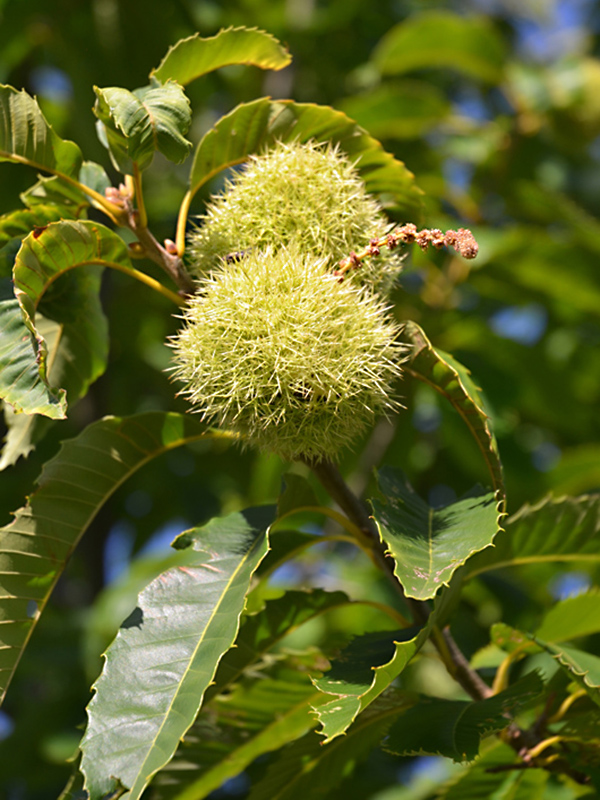
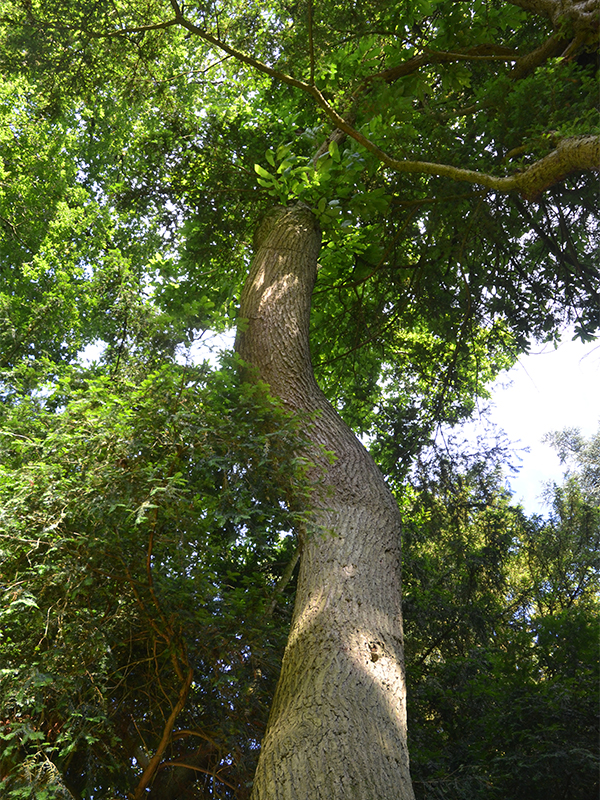
Form
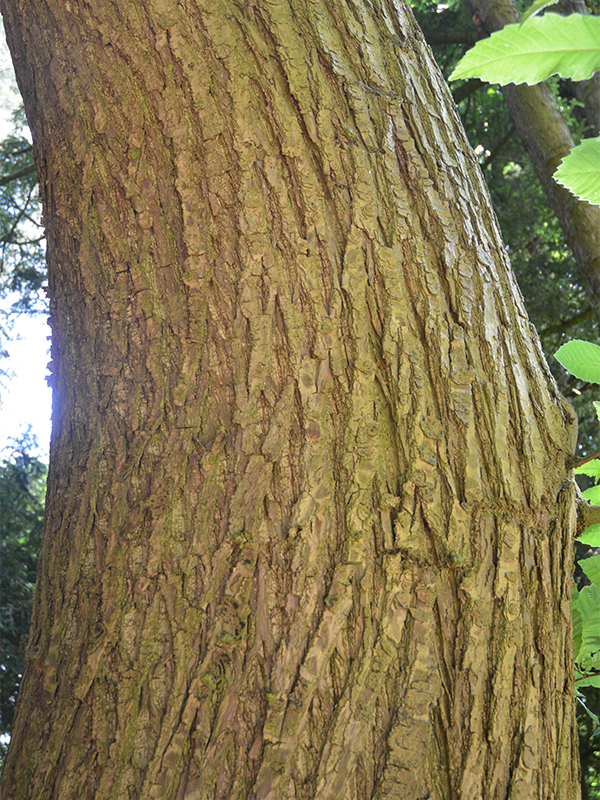
Bark
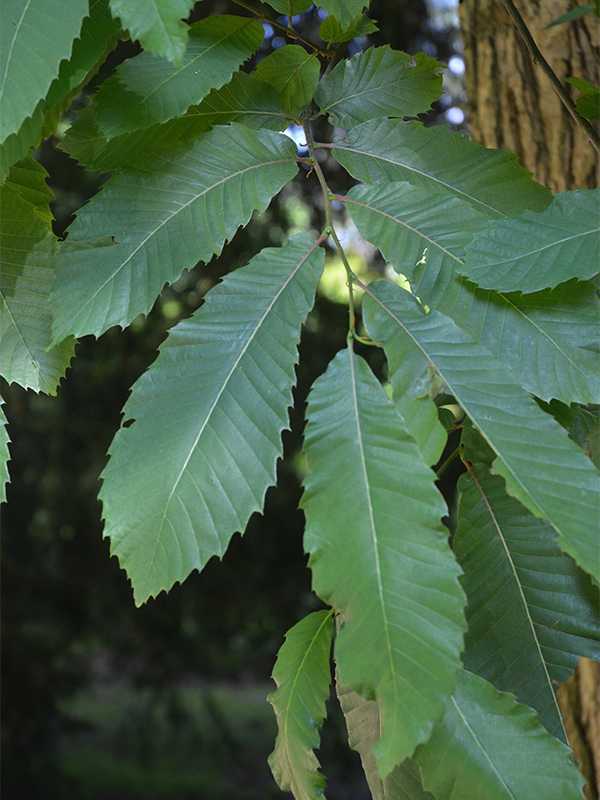
Leaf
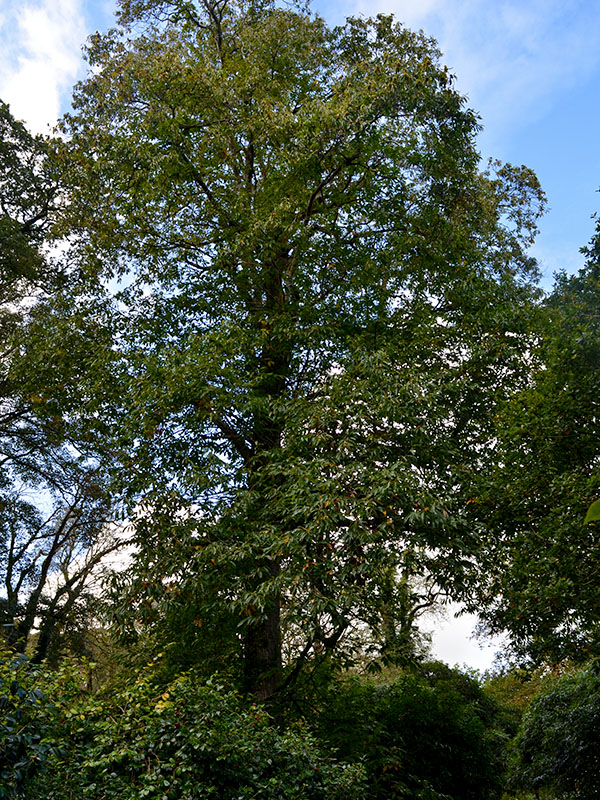
Castanea sativa, form, Lanhydrock Gardens, Cornwall, England.16/10/2019
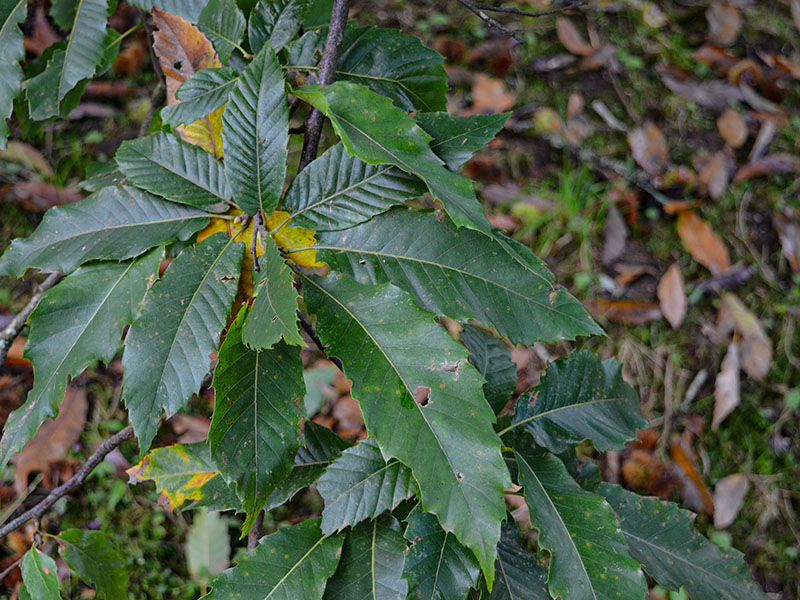
Castanea sativa, leaf, Lanhydrock Gardens, Cornwall, England. 16/10/2019
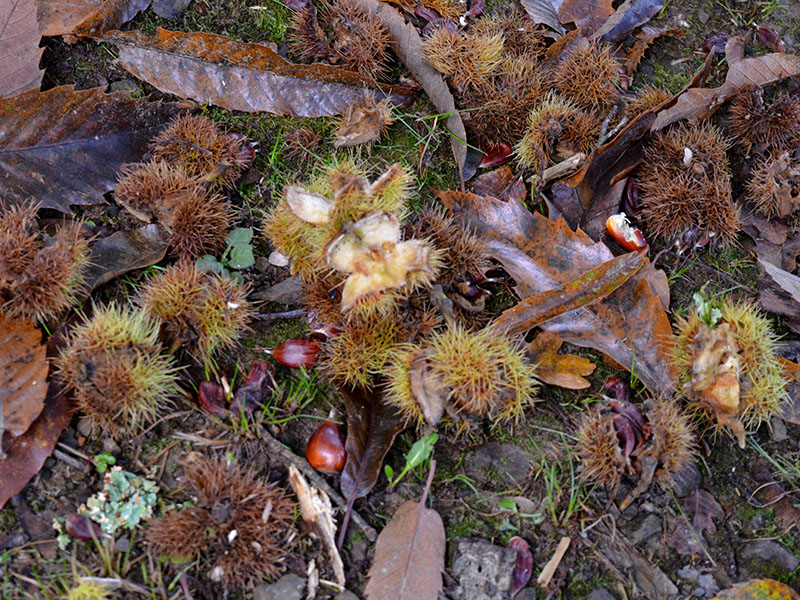
Castanea sativa, nuts, Lanhydrock Gardens, Cornwall, England. 16/10/2019
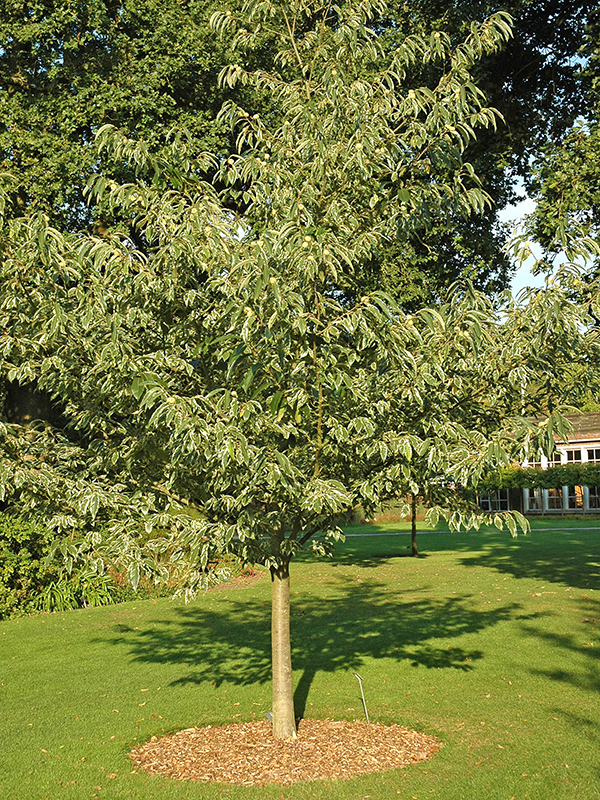
Castanea sativa 'Variegata'.
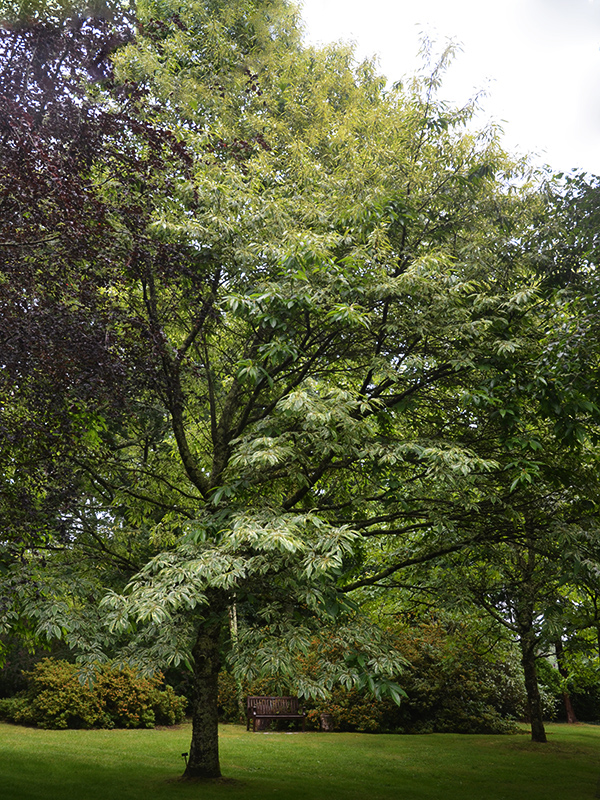
Castanea sativa 'Albomarginata'.